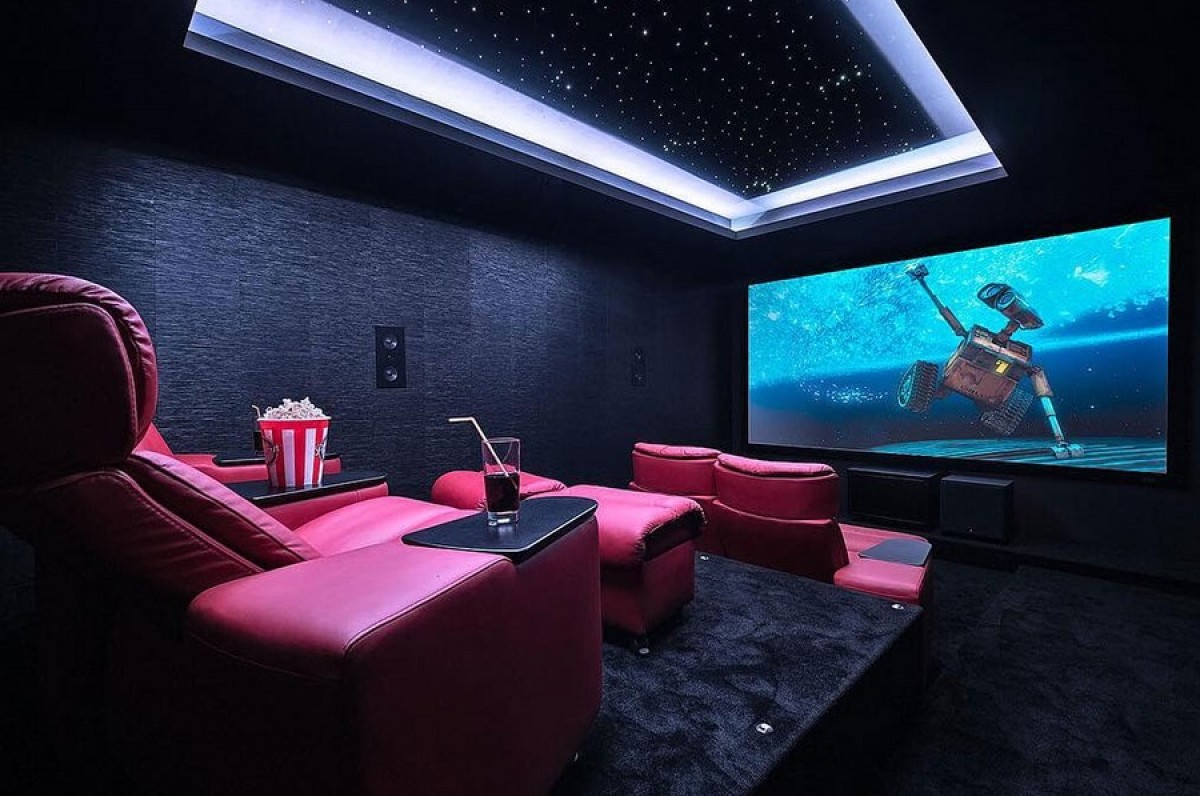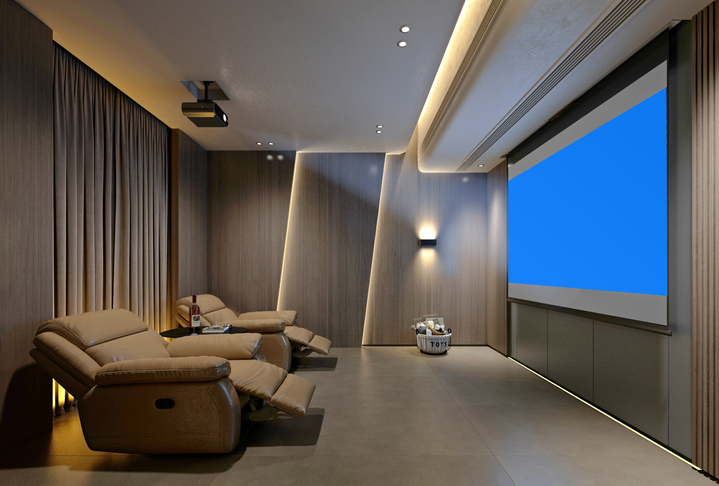Professional Tampa Home Theater Installation for a Effortless Experience
Professional Tampa Home Theater Installation for a Effortless Experience
Blog Article
Home Theater 101: Whatever You Need to Know for a Cinematic Experience in the house
Creating a home theater that matches the cinematic experience of a business theater includes cautious factor to consider of several parts, consisting of screen choice, sound systems, and area format. Whether you are pondering the suitable display dimension or the intricacies of border noise, comprehending these fundamentals is important.
Choosing the Right Screen
When establishing a home movie theater, choosing the best screen can make or damage the watching experience - home theater design tampa. The display works as the centerpiece of your configuration, affecting photo high quality, watching angles, and overall aesthetic. Key elements to consider consist of screen type, resolution, and size
Initially, figure out the suitable screen size based on your area measurements and seating distance. A basic standard is to sit about 1.5 to 2.5 times the angled screen dimension for optimum viewing. Next off, pick between various display types, such as fixed-frame, mechanized, or retractable screens, each offering distinctive benefits. Fixed-frame screens typically give the very best picture high quality, while motorized options enable for versatility in space use.
Resolution is one more critical aspect. For a really immersive experience, take into consideration a screen developed for 4K or also 8K content, making certain sharpness and clearness. Furthermore, consider the screen's gain, which impacts illumination and contrast; a higher gain can improve illumination in well-lit areas, while a lower gain might be more ideal for darker atmospheres.
Selecting Sound Equipment
Audio equipment is a critical element of any type of home cinema system, dramatically boosting the overall viewing experience. The selection of audio gear can figure out the deepness, quality, and immersion of audio, essential for developing a cinematic environment.
When picking audio equipment, take into consideration a surround stereo, which typically consists of a receiver, several audio speakers, and a speaker. A 5.1 or 7.1 network system is advised, where the first number represents the audio speakers and the second the speaker, offering an immersive soundscape. The receiver is the heart of the system, handling sound and video clip signals, and should sustain contemporary layouts like Dolby Atmos for a boosted spatial experience.
Quality speakers are essential; seek designs that use a well balanced noise profile with good bass reaction. Floor-standing speakers can generate richer noise, while bookshelf options conserve area. Additionally, consider wireless choices for simplicity of installation, although wired systems typically provide superior efficiency.

Ideal Seating Arrangements
Creating an ideal home movie theater experience pivots substantially on ideal seating plans. The plan of seats plays an important function in both comfort and seeing high quality, directly impacting the overall motion picture experience.
First, take into consideration the display dimension and seeing distance. An usual standard is to place seats at a distance approximately 1.5 to 2.5 times the angled size of the screen. This makes certain an immersive experience without stressing the eyes.
Next, elevation is essential. The back rows ought to be higher than the front to stay clear of blockages if your seats is in a tiered style. For flat seats, make sure that the front row is not as well close to the screen, which everybody has a clear view.
Furthermore, think about the arrangement in regards to social characteristics. Group seats can enhance the public experience, while private seats may be chosen for individual viewing.

Finally, prioritize comfort with ergonomic seating that supports extended viewing durations. Incorporating recliner chairs or supported seats can substantially improve the experience, making the home theater a recommended destination for both enjoyment and relaxation.
Lighting and Setting
Effective illumination and setting are necessary components of a well-designed home cinema, as they dramatically influence the viewing experience. The right illumination can boost the motion picture feel, while inadequate selections can diminish it. For optimum outcomes, consider a layered lighting method that consists of ambient, job, and accent lights.
Ambient lights supplies basic lighting, guaranteeing that the room is not entirely dark, which can strain the eyes. Dimmer switches are highly advised, enabling adjustments based on the content being seen. Job illumination, such as wall sconces or floor lamps, provides functional illumination for tasks like analysis or browsing the room without interrupting the overall atmosphere.
Accent illumination can be made use of to highlight building functions or create focal points, adding depth and passion to the space. LED strip lights behind screens or along shelves can supply a subtle glow that boosts the visual experience without overwhelming the visitor.

Wiring and Installation Tips
A tactical electrical wiring configuration is important for accomplishing ideal performance in your home theater system. Correct circuitry not just ensures premium audio and video clip signals yet likewise improves the total visual of your area. Begin by mapping out your layout, recognizing where each element will be placed, including your display, speakers, and receiver.
When selecting cables, focus on premium, suitably assessed site web wiring to reduce signal loss. HDMI cords must be used for video clip links, while speaker wire ought to match the specifications of your audio speakers and amplifier. Go with in-wall rated wires to adhere to safety requirements you can try these out and maintain a tidy look.

Conclusion
In summary, developing an outstanding home movie theater experience calls for cautious factor to consider of different aspects, including screen option, audio equipment, seating plans, illumination, and wiring. Each element plays a crucial function in attaining ideal efficiency and atmosphere, inevitably enhancing the pleasure of home enjoyment. By prioritizing these aspects, a motion picture atmosphere can be effectively duplicated, allowing for immersive checking out experiences that measure up to conventional movie theater settings. Interest to information in each location is important for general satisfaction.
Producing a home theater that rivals the cinematic experience of an industrial theater includes cautious factor to consider of numerous elements, including screen selection, audio systems, and room layout.When establishing up a home cinema, picking the right screen can make or damage the watching experience. Next off, choose between numerous display types, such as fixed-frame, motorized, or retractable screens, each offering unique advantages. For a Homepage truly immersive experience, consider a screen developed for 4K or even 8K content, ensuring intensity and clearness.In summary, producing an exceptional home theater experience calls for mindful consideration of various components, including screen option, audio tools, seating setups, illumination, and wiring.
Report this page